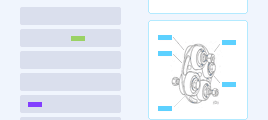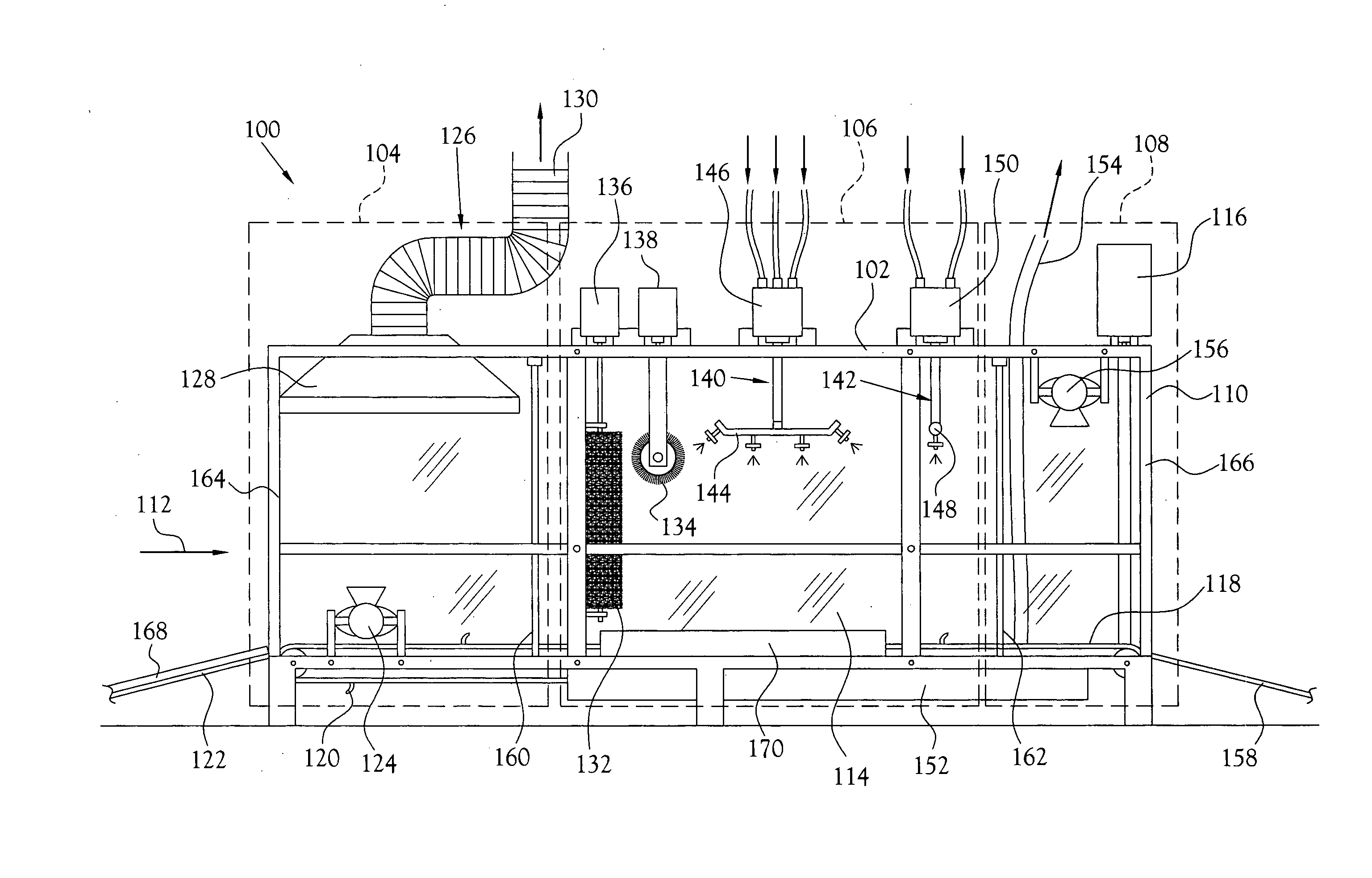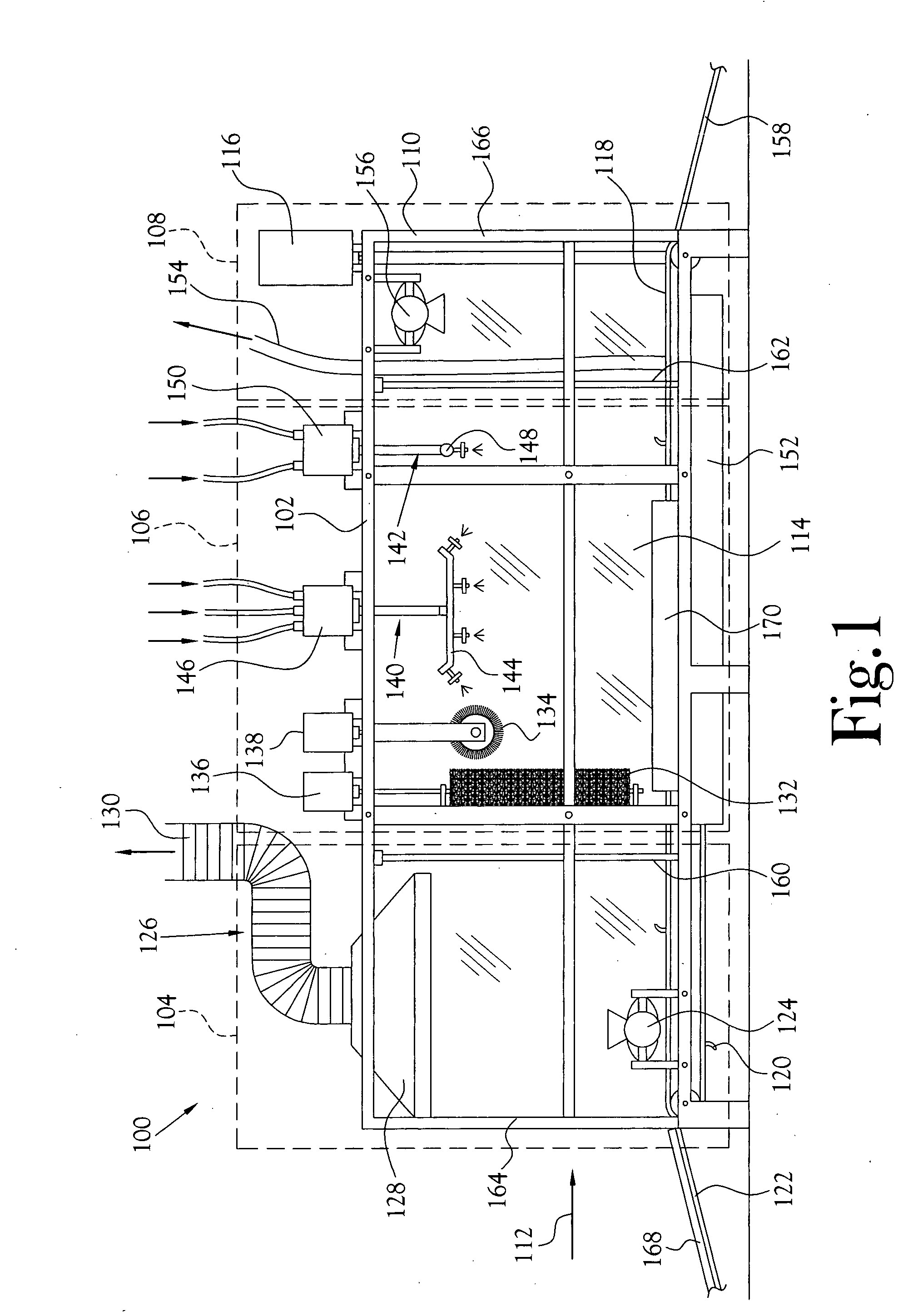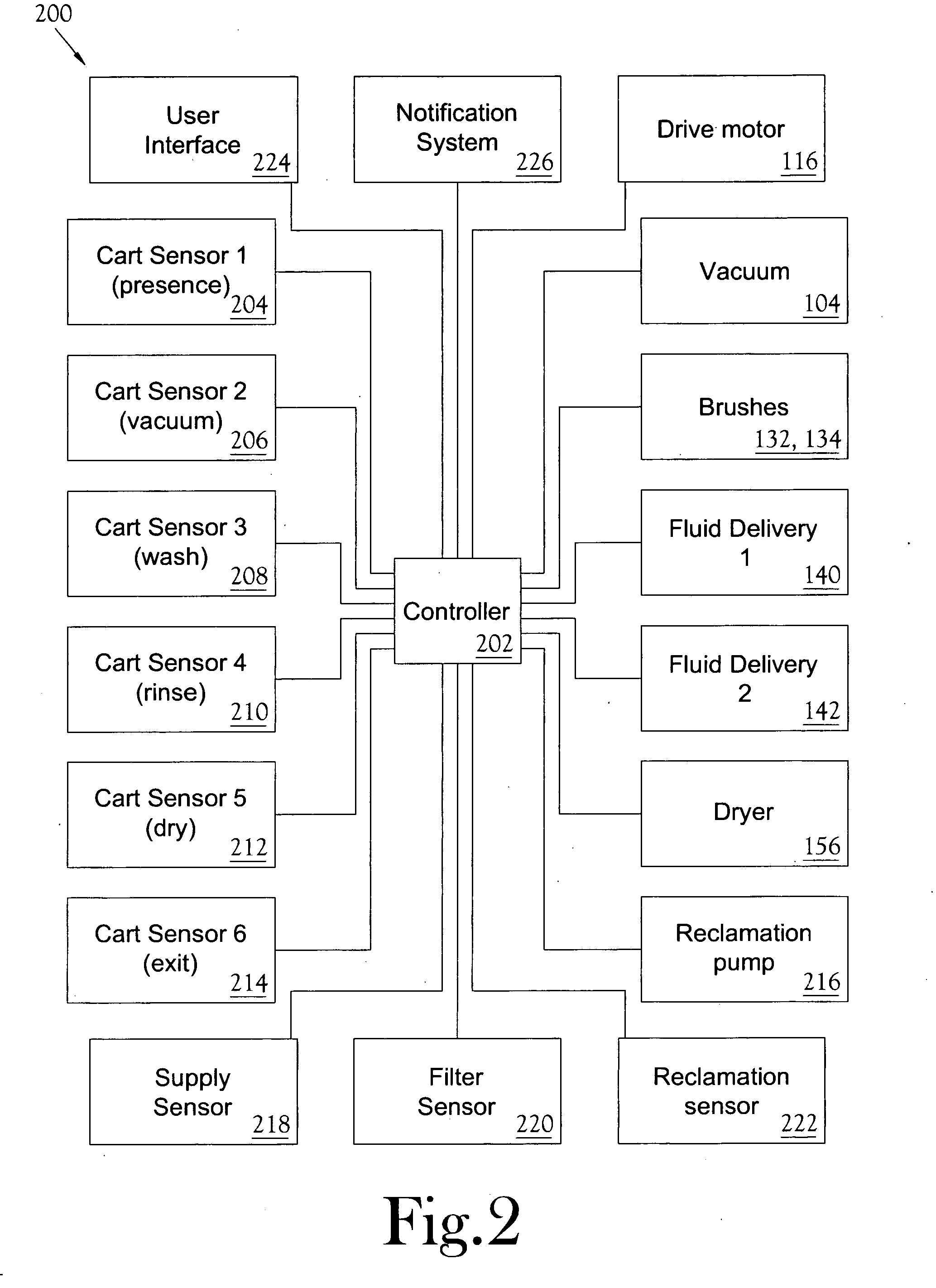[0017] An automatic cart wash apparatus is shown and described. The automatic cart wash apparatus provides improved cleaning of stock carts on a regular basis over manual cleaning by store employees. The automatic cart wash apparatus includes three main stages: a debris removal (vacuum) stage, a cleaning (wash, sanitize, rinse) stage, and a drying stage. The debris removal stage uses
forced air and / or suction to remove
solid and generally non-soluble waste, such as a paper or other trash and debris, from a stock cart. The cleaning stage uses a selection of detergents, sanitizing agents, and rinse agents to remove soluble or sticky waste, such as food and liquids, and to kill germs, viruses, and
bacteria present on the cart. The drying stage removes excess liquids from the cart making it ready for use by the next customer.
[0022] The cleaning stage follows the vacuum stage. The primary function of the cleaning stage is the application of one or more cleaning fluids to the stock cart. The cleaning fluids are selected to remove
dirt and grime and / or kill germs and contaminants. The brushes provide scrubbing to assist in the removal of debris attached to the cart. In conjunction with the cleaning fluids, the brushes, thoroughly cleaning the more heavily soiled areas of the cart, such as the child transportation seat and the cart
handle. A pair of vertically-mounted brushes scrubs the sides of the cart while a horizontally-mounted
brush scrubs the
handle and the child transportation seat. The vertically mounted brushes serve to standardize the position of the cart and to provide stability while they are in engagement with the cart.
[0027] One or more sensors provide information to a controller about the presence and / or position of a stock cart within the automatic cart wash apparatus. The
control system of Figure is associated with a highly instrumented embodiment of the automatic cart wash apparatus. The
control system as shown includes a first cart sensor, which detects the presence of a stock cart. When the presence of a cart is detected by the first cart sensor, the controller activates the
drive motor for the conveyance
system. The next sensor is a tied to the vacuum
system and detects when a stock cart enters the vacuum stage. In response to the
signal from the vacuum sensor, the controller activates the vacuum stages including the blower and the exhaust
system. The cleaning stage sensors, notify the controller when a cart is in position for washing and rinsing. A
signal from the wash sensor causes the controller to activate the brushes, and the first fluid
delivery system. A
signal from the subsequent rinse sensor allows the controller to activate the second fluid
delivery system. Carts leaving the cleaning stage trigger the dryer sensor causing the controller to start the dryer. An exit sensor allows the controller to disengage the conveyance system.
[0028] In addition to provide a platform for the sensing mechanisms, the
doors serve similar functions to the panels used to enclose the automatic cart wash apparatus. By providing separation between the stages, the
doors serve to preserve the integrity of the cleaning process.
[0029] Other sensors providing information to the controller include a supply
sensor system and a filter
sensor system, which signal the controller of problem conditions. Upon
receipt of a signal from the supply
sensor system or the filter sensor system, the controller can notify the operator through a
notification system. A reclamation sensor monitors fluid levels in the reclamation pan and / or the
holding tank. The
notification system includes indicator lights, audible alarms, and / or display panels for providing textual status information. A
user interface device allows an operator to control various parameters, control schemes, and
modes for the automatic cart wash apparatus.
 Login to View More
Login to View More  Login to View More
Login to View More 


